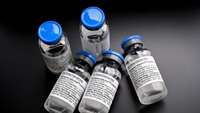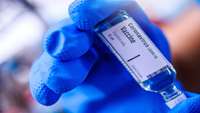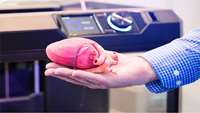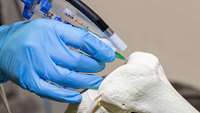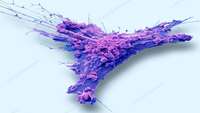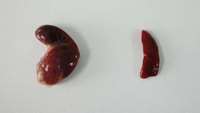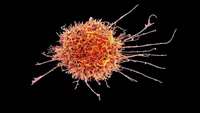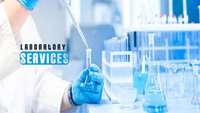Remdesivir but not famotidine inhibits SARS-CoV-2 replication in human pluripotent stem cell-derived intestinal organoids
The severe acute respiratory syndrome coronavirus 2 (SARS-CoV-2) infects the respiratory tract with mostly mild symptoms, but up to 20% of patients develop severe pneumonia eventually followed by multi-organ failure and death1 .
Engineered human mesenchymal stem cells as new vaccine platform for COVID-19
Recently, there are several routes for COVID-19 vaccine research, yet their weaknesses lie in low efficiency, tolerability, immune adaptability and safety.
Directly printing 3-D tissues within the body
In the TV series Westworld, human body parts are built on robotic frames using 3-D printers. While still far from this scenario, 3-D printers are being increasingly used in medicine. For example, 3-D printing can be used to produce parts of the body such as orthopedic joints and prosthetics, as well as portions of bone, skin and blood vessels.
Primitive stem cells point to new bone grafts for stubborn-to-heal fractures
Although most broken bones can be mended with a firm cast and a generous measure of tender loving care, more complicated fractures require treatments like bone grafting. Researchers at Texas A&M University have now created superior bone grafts using primitive stem cells. They found that these cells help create very fertile scaffolds needed for bone to regenerate at the site of repair.
Magnetic guidance improves stem cells' ability to treat occupational lung disease
Results of a study released today in Stem Cells Translational Medicine (SCTM) may point the way to a cure for a serious lung disease called silicosis that affects millions of workers worldwide. Silicosis results from years of breathing in dust microparticles of silica by workers in professions such as construction and sand blasting.
New insights into wound healing
The team, led by Delaram Shakiba, a postdoctoral fellow from the NSF Science and Technology Center for Engineering Mechanobiology (CEMB) at the McKelvey School of Engineering, discovered the way fibroblasts, or common cells in connective tissue, interact with the extracellular matrix, which provides structural support as well as biochemical and biomechanical cues to cells.
Transforming spleens into liver-like organs in mice
A team of researchers affiliated with several institutions in China has developed a means for coaxing a mouse spleen into behaving like a liver—a possible alternative to transplantation. In their paper published in the journal Science Advances, the group describes their technique and how well it worked with test mice.
Putting 'super' in natural killer cells
Using induced pluripotent stem cells (iPSCs) and deleting a key gene, researchers at University of California San Diego School of Medicine have created natural killer cells -- a type of immune cell -- with measurably stronger activity against a form of leukemia, both in vivo and in vitro.
The Market for Cellular Products Is Expanding
Over the last few years, new groups and knowledge-based companies have developed their activities in the stem cell field. These companies are mostly engaged in the production of materials, equipment and cellular products.
A Suitable Platform Was Provided for Providing Laboratory Services to Neighboring Countries
Reza Asadifard, the manager of the strategic technologies laboratory network, pointed out an increase in the quality of lab services of the country, emphasizing the necessity of providing these services to other countries.


